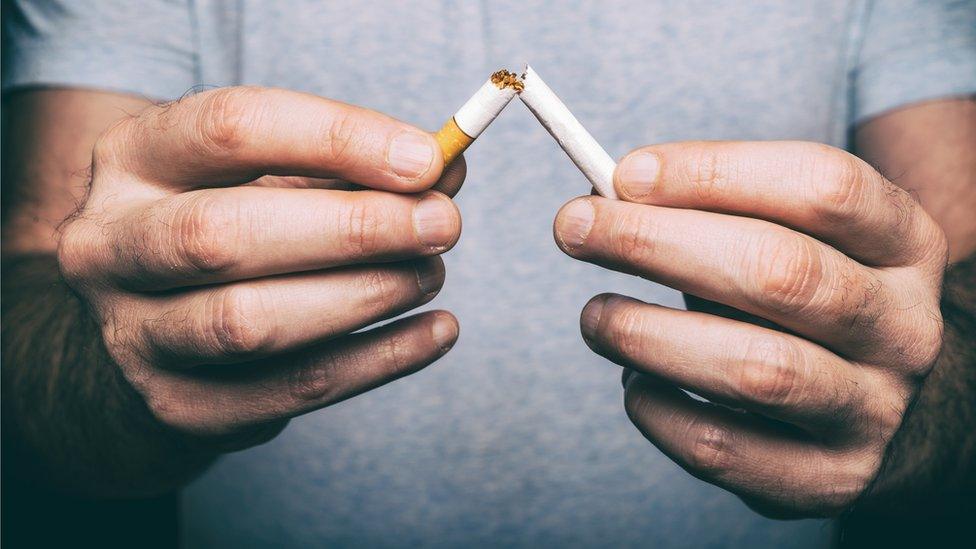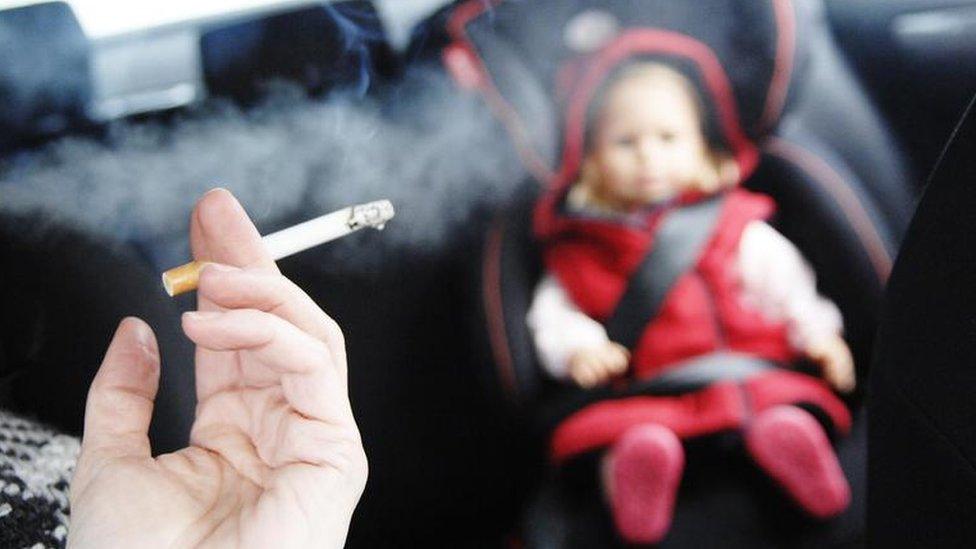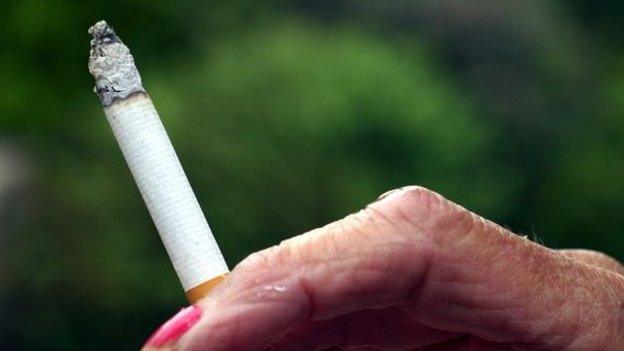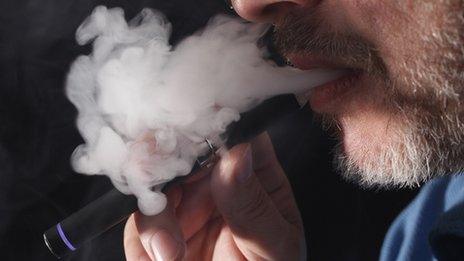Scottish anti-smoking strategy shows 'positive impact'
- Published
- comments

Smoking among adults in Scotland was already falling when the strategy was published in 2013
The Scottish government's efforts to reduce smoking in Scotland are working, according to a new report.
The review, conducted by the University of Edinburgh and NHS Health Scotland, said the tobacco control strategy had shown a "positive impact" over the past five years.
However, the report's authors cautioned that smoking continued to be a bigger problem in more deprived areas.
The aim is to have a "smoke-free generation" in Scotland by 2034.
The report concluded progress had been made across all three areas of tobacco policy: prevention, protecting people from second-hand smoke and helping people stop smoking.
Reviewing the strategy, the authors highlighted that:
Tobacco products in supermarkets and shops had been moved out of sight
Number of children exposed to second-hand smoke in home was cut from 11% to 6%
Smoke-free NHS grounds policies have been introduced
The review also said there had been a reduction in cigarette brand awareness in young people, which was attributed to products being moved from view.
Dr Garth Reid, principal public health adviser at NHS Health Scotland, said: "The evidence shows the positive impact of tobacco policy, ranging from the display ban which put tobacco out of sight in small shops and supermarkets to the introduction on smoke free NHS grounds.
"Yet, levels of smoking are still highest in Scotland's most deprived areas, with 35% of people living in the most deprived areas smoking compared to 10% in the most affluent areas.
"It is clear that further action to reduce inequalities in smoking is necessary if the aim of making Scotland tobacco-free by 2034 is to be achieved."

The Scottish government wants to create a "smoke-free generation" by 2034
When the strategy was published in 2013, the number of adults smoking in Scotland was already falling, but NHS Health Scotland said it was still the single most preventable cause of ill health and premature death in the country.
There are more than 13,000 deaths - a quarter of all deaths - and 56,000 hospital admissions related to smoking every year, according to the body.
Dr John McAteer, senior research fellow at the University of Edinburgh said: "One of the aims of the 2013 tobacco control strategy was to reduce second-hand smoke exposure among children by 2020.
"The most recent Scottish Health Survey shows that second-hand smoke exposure fell from 11% to 6% between 2014 and 2015. This equates to 50,000 children having been protected from the harms of daily second-hand smoke exposure at home.
"Scotland has some of the most progressive tobacco control policies in the world, and Scottish smoking rates have fallen from 31% in 2003 to 21% in 2015."
- Published26 March 2016

- Published2 February 2016

- Published17 December 2015

- Published26 August 2015

- Published27 May 2014
